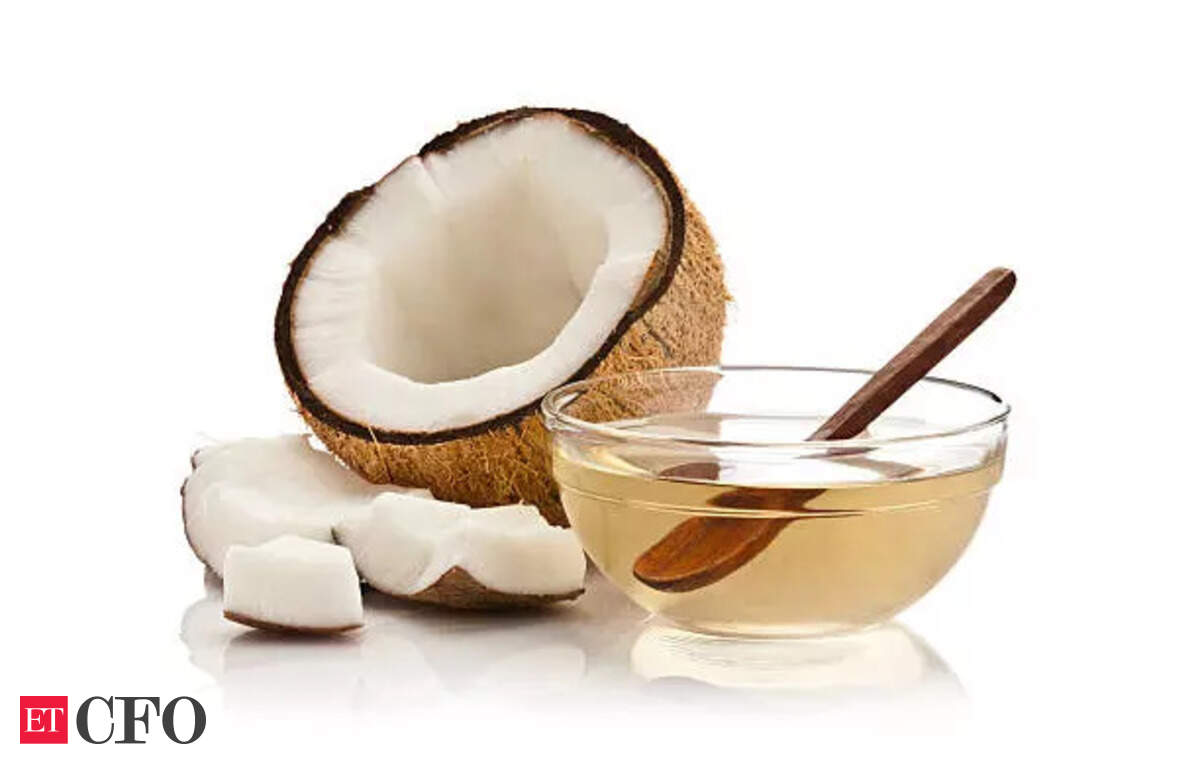, a key oil found in most Indian homes, has seen sharp price increases over the past year, contributing to higher grocery bills. Companies like
Maricoand
Daburhave together raised prices in the category by close to 40% over the past 12 months, citing heavy inflationary pressure.
Saugata Gupta, managing director and CEO of Marico, told TOI that commodity prices have more or less “peaked”, and that further price increases are unlikely unless a “black swan event” occurs. He expects better volume growth for the FMCG sector in the current financial year.
For Marico, which makes the Parachute brand of coconut oil, copra—the dried coconut kernel from which the oil is extracted—makes up a significant share of its raw material basket. Over the past year, copra prices surged by 40–50%, which forced Marico to hike coconut oil prices by nearly 30%, Gupta told The Times of India. According to market estimates, Marico holds over 50% of India’s coconut oil market.
Companies with a larger presence in the category, like Marico, typically use copra to manufacture coconut oil, while others procure the oil directly from the market. Stockist sources said Dabur had taken a 10% price hike in the past three to six months.
“We mitigated the impact of inflation through a mix of value engineering, cost-saving initiatives, and judicious price increases, keeping the competitive intensity in mind,” said Ankush Jain, chief financial officer at Dabur India.
Globally, coconut oil prices have surged to record highs. Earlier this month, the benchmark wholesale price of coconut oil from the Philippines, delivered in Rotterdam, crossed $2,700 per metric tonne—almost 200% higher than the average price from 2000 to 2020, according to Bloomberg. This sharp rise has been driven by poor weather conditions that affected coconut production across Southeast Asia.
Within India, FMCG firms are facing high input cost inflation in several categories, including cocoa and edible oils. Crude oil prices, however, have remained soft, giving some respite to companies.
Adding to the pressure is a demand slowdown, particularly in urban areas. FMCG firms are hopeful that demand will revive soon, helped by easing food inflation. Hindustan Unilever (HUL), the biggest player in the industry, expects the first half of FY26 to perform better than the second half of FY25.
Gupta of Marico also believes that the industry will see stronger volume growth this financial year. “Urban demand didn’t deteriorate further. It’s subdued but not stressful,” he said. He added that FMCG companies will have to keep premiumising their offerings to maintain growth even in a sluggish environment.
“The extra disposable income that consumers will get through the tax breaks will be spent on upgrading and discretionary, not necessarily only staples,” Gupta said.
(With TOI inputs)





Comments (0)